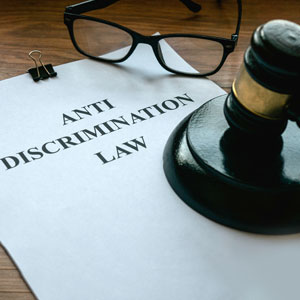Call For A Free Consultation
(386) 388-6260No Recovery, No Fee

One of the most common defenses employers use in discrimination cases is claiming they didn’t realize you were complaining about illegal conduct. Instead, they might argue that they thought your concerns were about unfair or unkind treatment—actions that, while unpleasant, are not unlawful.
For instance, an employer might claim they misunderstood your complaint about being treated differently than colleagues of a different racial or ethnic background. They could argue they believed you were simply upset about general workplace dynamics rather than discrimination.
This is where documentation becomes critical. A clear, detailed paper trail can prevent your employer from relying on this “play dumb” strategy. Specific, documented communication leaves no room for misinterpretation and significantly strengthens your position.
Thirty years ago, creating such a record was far more challenging—and sometimes risky. Back then, documenting workplace issues often required taking noticeable steps that could be perceived as hostile or adversarial. Today, however, communication tools like email chains and digital platforms make it easier than ever to establish a clear, irrefutable trail of your efforts to address discrimination.
This shift is a game-changer. By documenting your complaints and the specifics of the situation, you not only protect yourself but also increase your ability to meet the high legal standards required to prove your case in an at-will state like Florida.
Accurate documentation is key to building a strong case if you decide to file a claim. To ensure your complaints and experiences are well-recorded, consider using one or more of the following methods, while keeping everything organized and secure:
A word of caution about recording: In Florida, unilateral recording without consent is prohibited under the state’s expectation-of-privacy laws. While there are exceptions, the law generally prioritizes privacy in conversations. This can make recording workplace interactions risky and open to allegations of illegal activity.
Although there’s an argument that an employer-employee relationship might not involve a full expectation of privacy, it’s safer to avoid recording without clear consent. Instead, focus on written documentation. Written records—especially with copies stored securely—eliminate risks tied to allegations of illegal recordings and reduce misunderstandings.
Let me share a fascinating case I handled, which highlights the importance of clear evidence in workplace discrimination claims.
I had the privilege of representing a single mother who was pregnant and working as a waitress in a restaurant. The restaurant was part of a group that encouraged owners to act as “secret shoppers” at each other’s establishments. These visits allowed owners to offer constructive feedback on operations.
During one such visit to this Daytona-area restaurant, an out-of-town owner noticed my client and commented that they had previously employed a pregnant waitress who slipped, fell, and tragically suffered a miscarriage. The visiting owner described it as a legal and emotional nightmare and suggested removing my client from the payroll to avoid a potential liability. Shockingly, the restaurant followed through and terminated her employment.
A coworker overheard this conversation and informed my client about it. When she came to me, she explained the situation but was uncertain whether her colleague would support her when it mattered. Understandably, the coworker’s loyalty to the employer complicated the situation. I asked if she had any other evidence to confirm that her pregnancy was the real reason for her termination.
What happened next was nothing short of remarkable. My client had applied for Medicaid to cover her childbirth and postnatal care. As part of the application, the government required information about her last job, including whether her termination was voluntary or involuntary. She reported it as involuntary, prompting the government to send a form to the restaurant owner for verification.
The business owner responded, confirming the termination was involuntary. In the section asking for the reason, he provided a single word that would become our golden ticket: pregnancy.
This was a signed government document, submitted under penalty of perjury. The admission was as clear and irrefutable as it gets—lawyers dream of evidence like this, but it’s exceedingly rare.
After obtaining this document, I made a quick call to the restaurant owner. Initially, he was skeptical and asked for time to research whether the law supported my claims. Once he confirmed that I was correct, we engaged in a brief negotiation and reached a very favorable settlement for my client.
The case concluded with a handshake and a lesson learned for the business owner about the serious consequences of ignorance of the law.
While few cases have evidence as perfect as this, many do contain useful documentation, such as internal memos or witness testimony. Written evidence explicitly showing discriminatory intent, like in this case, remains the gold standard and can make all the difference in achieving justice.
Does a manager’s discriminatory social media posts or behavior outside of work automatically mean discrimination is happening in the workplace? Not necessarily—but it can serve as evidence if it does.
External evidence, such as social media posts, can be highly relevant in a discrimination case. Judges often allow juries to consider such evidence alongside other facts when evaluating an employer’s intent and behavior. If the external conduct aligns with workplace actions and demonstrates discriminatory intent or animus, it can be a powerful addition to your case.
For example, if a manager’s posts reflect consistent attitudes or biases that mirror how they treat employees, this behavior can strongly support a claim of discrimination. While there may be debate about whether such evidence is more prejudicial than probative, it is undeniably worth investigating and preserving.
The takeaway? If you encounter any evidence—especially written content, but even verbal statements or behavior outside the workplace—take steps to document and preserve it. When it comes time to file your claim, this evidence could play a critical role in supporting your case.
For more information on Documenting Incidents Of Discrimination In Florida, for a free consultation is your next best step. Get the information and legal answers you are seeking by calling (386) 388-6260 today.